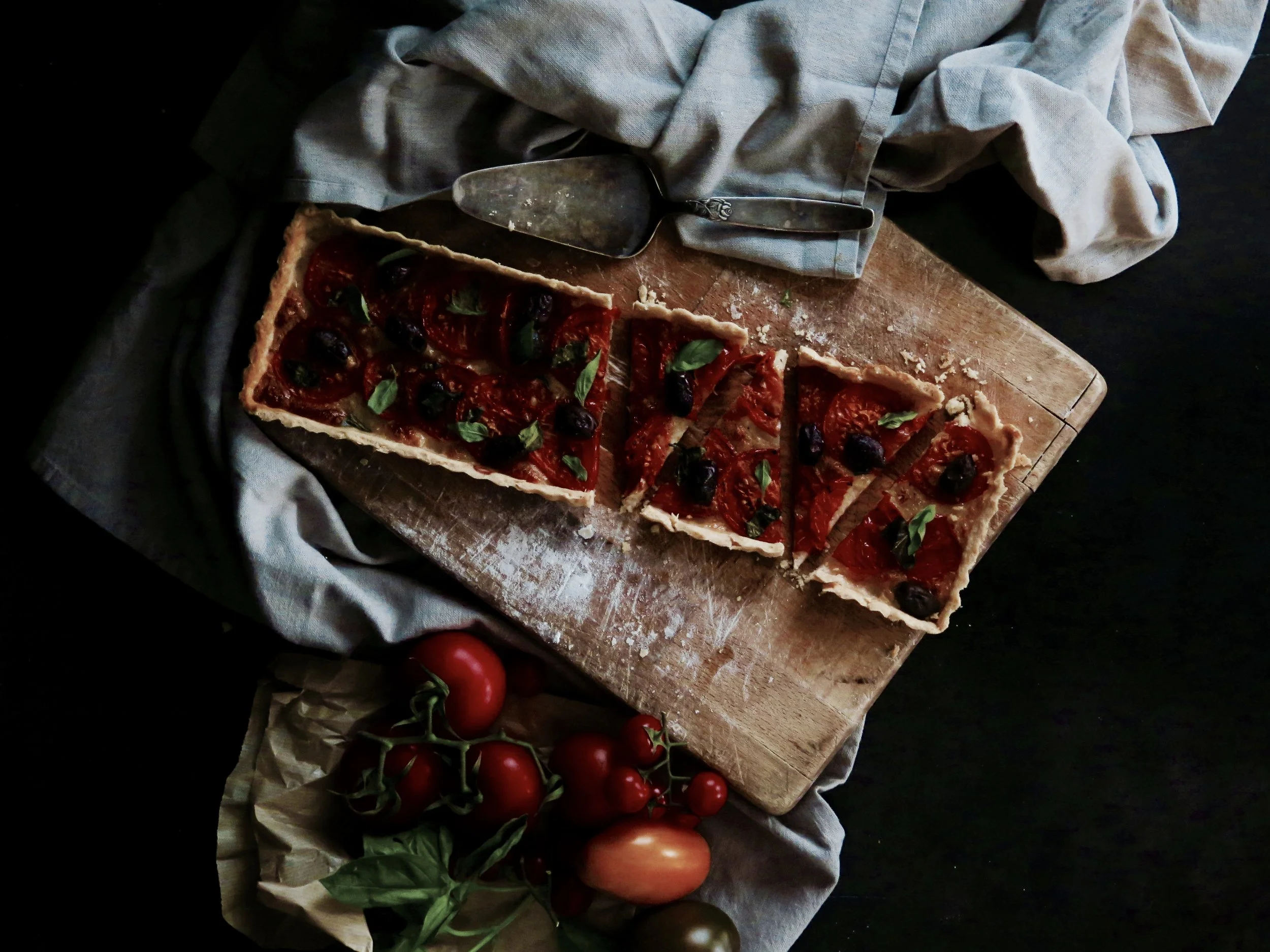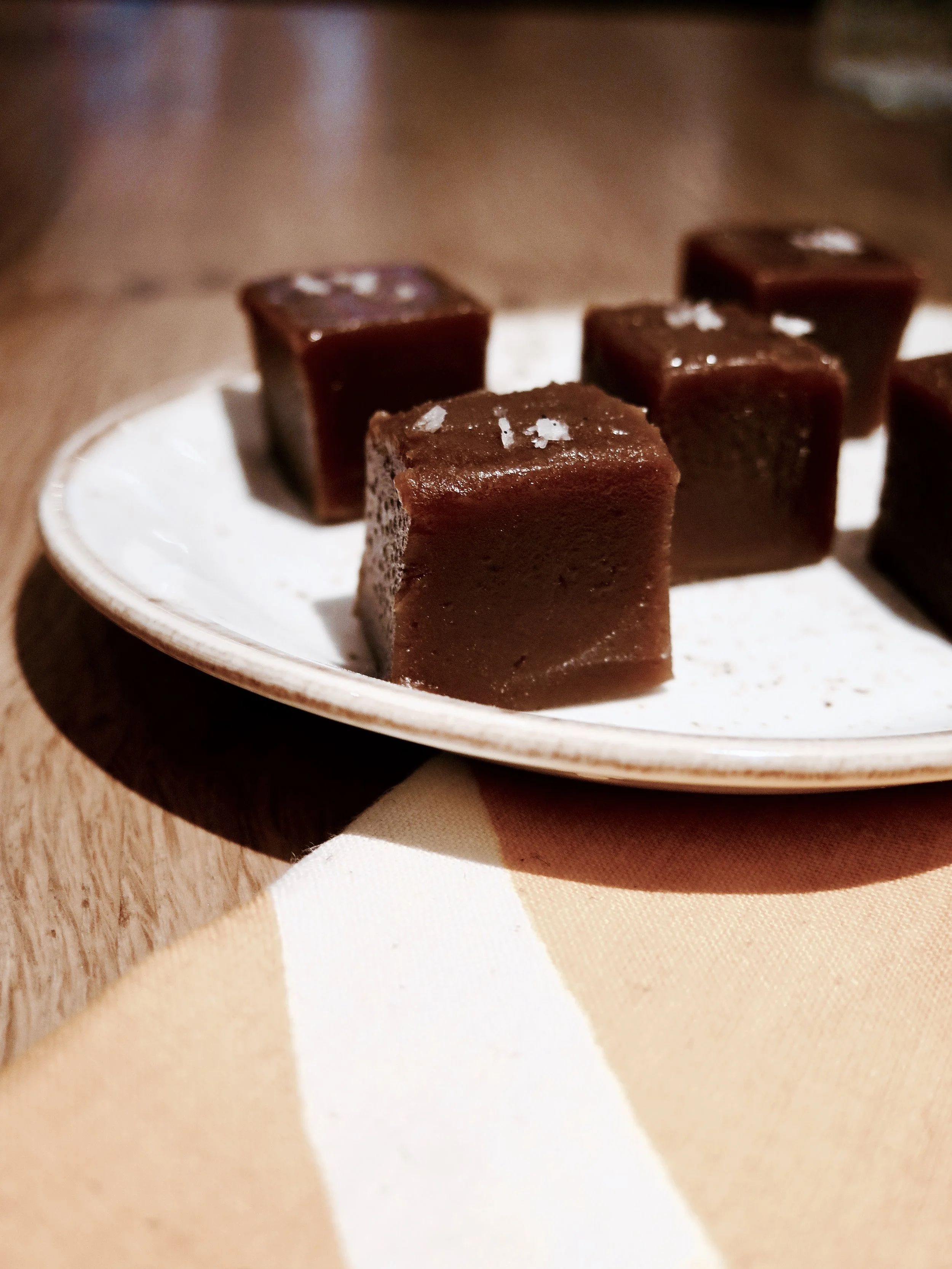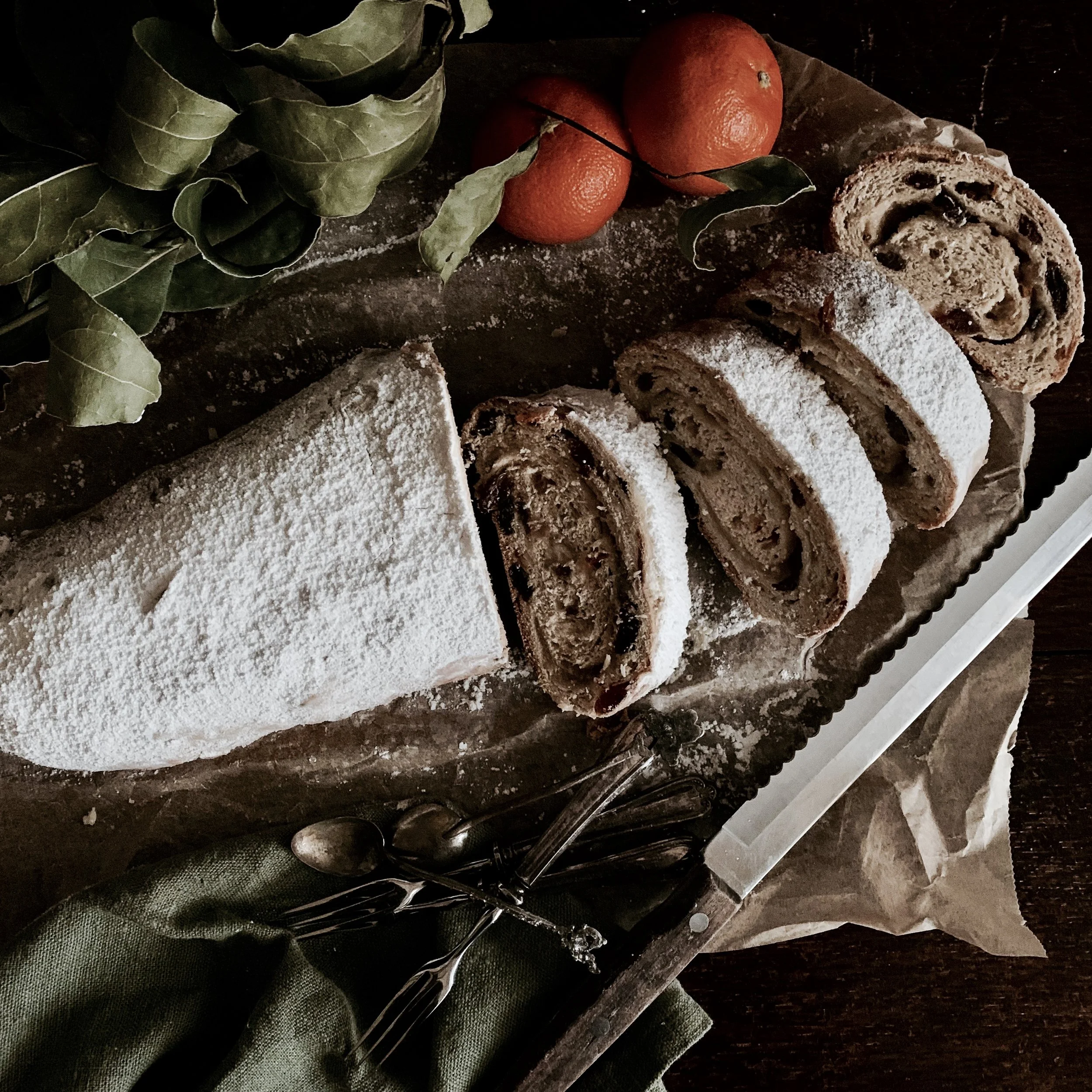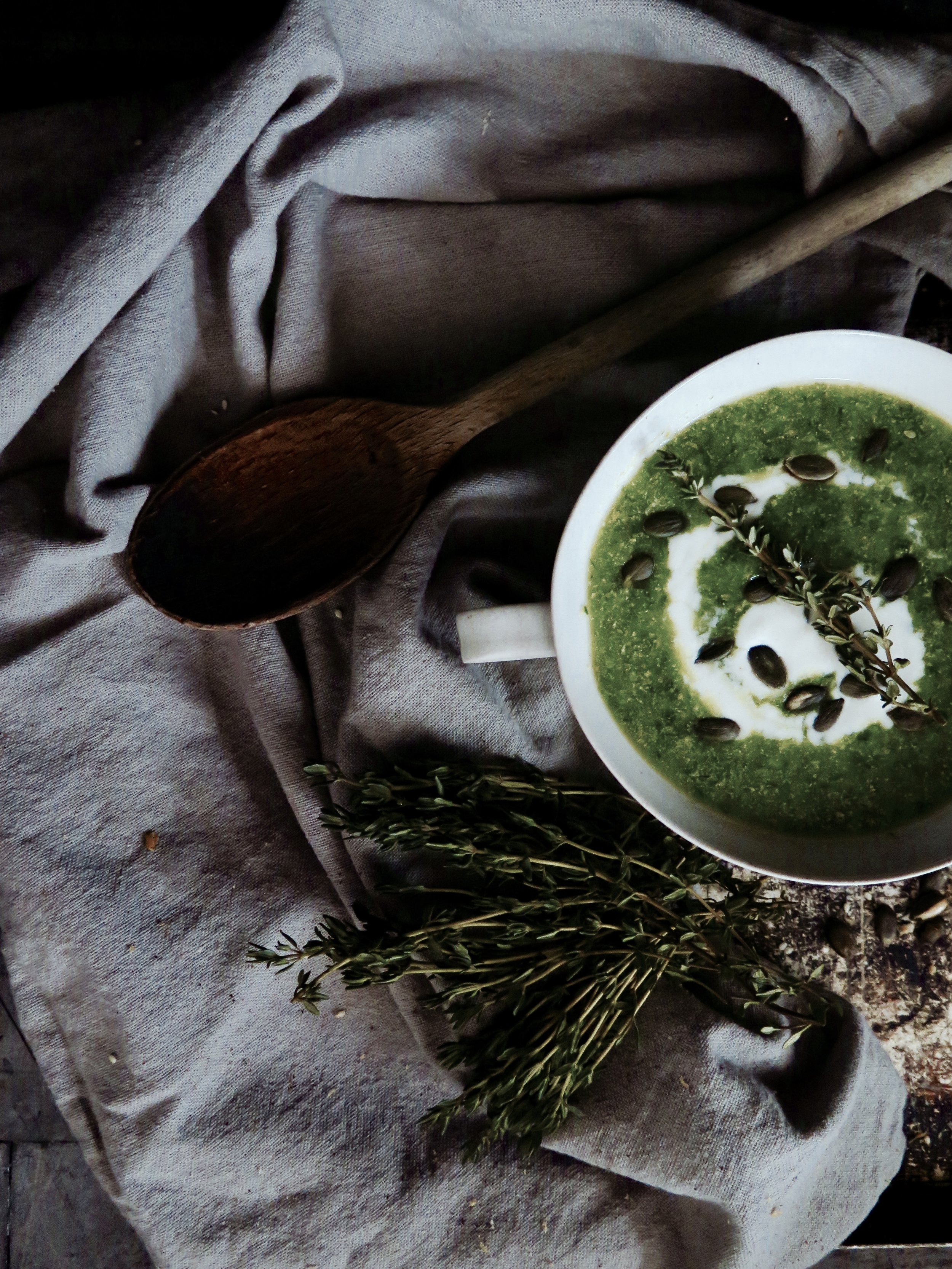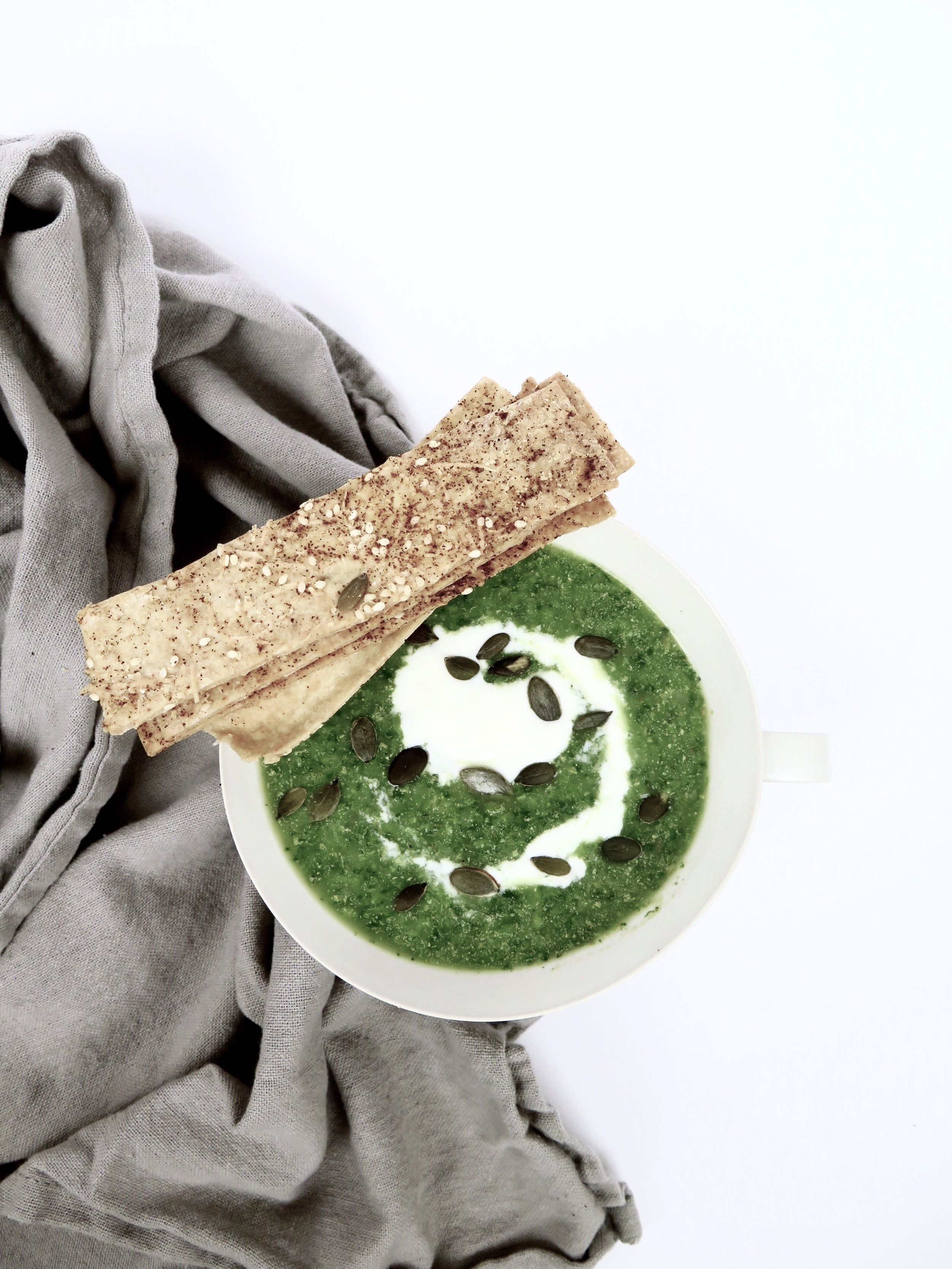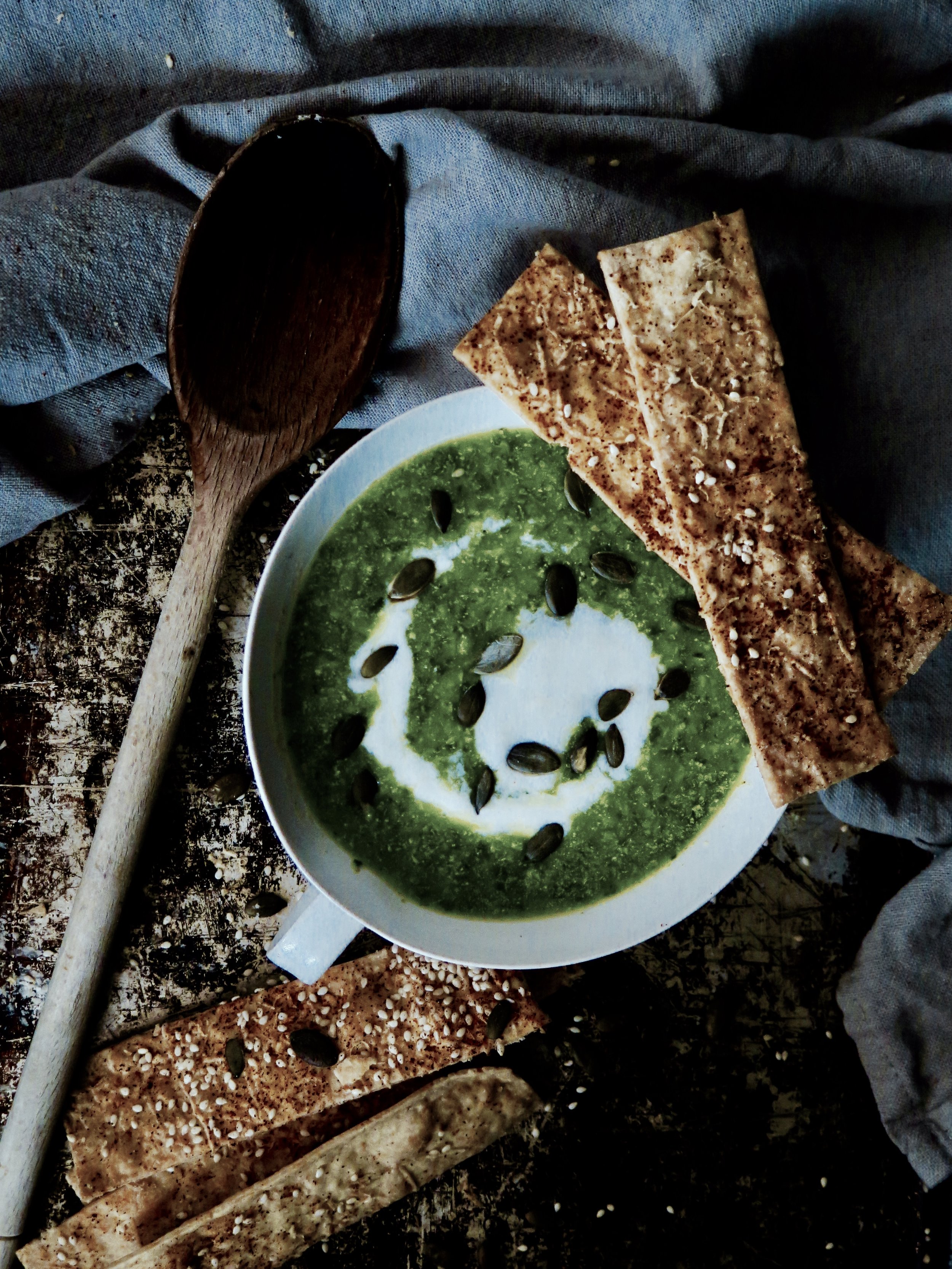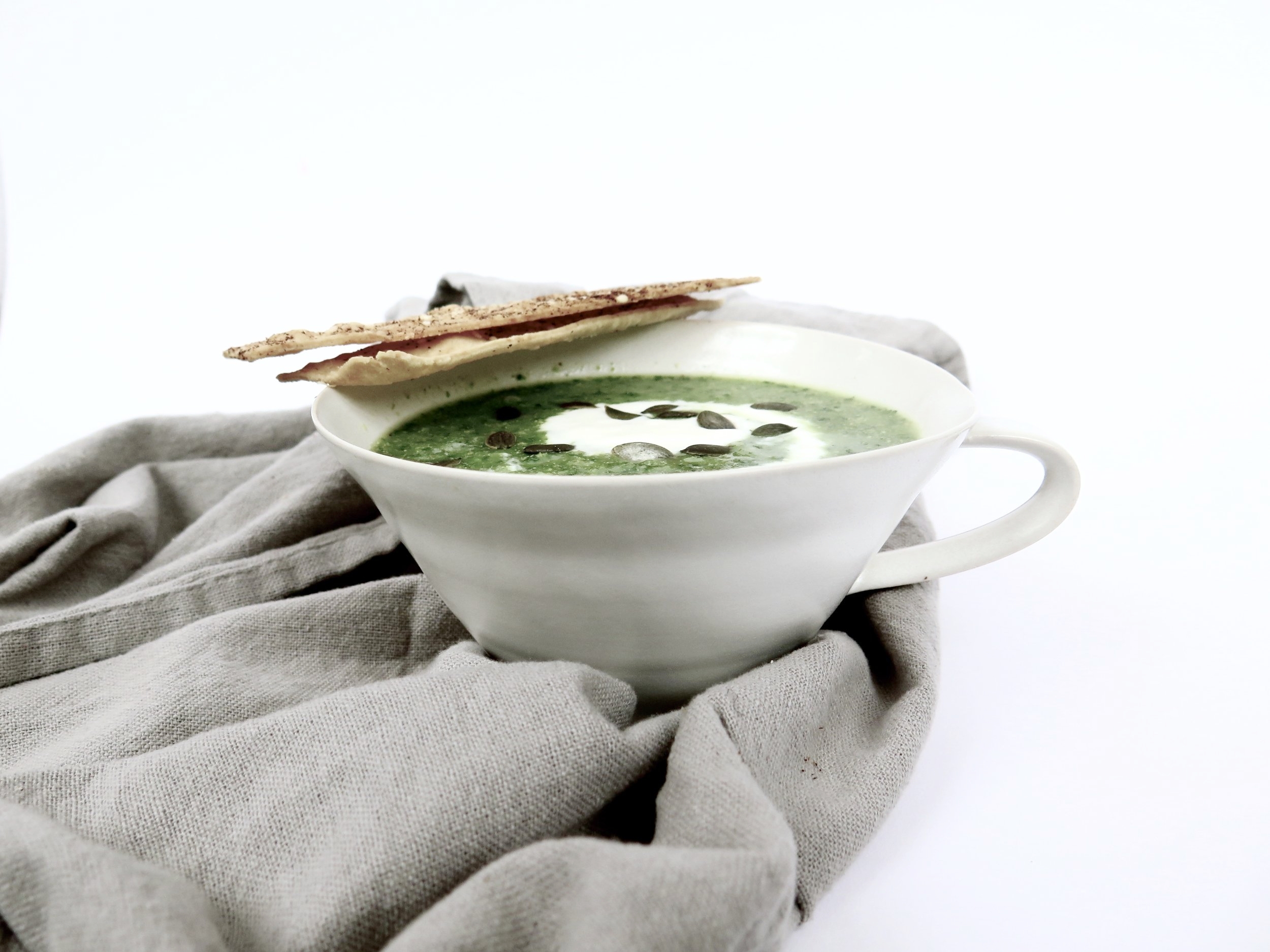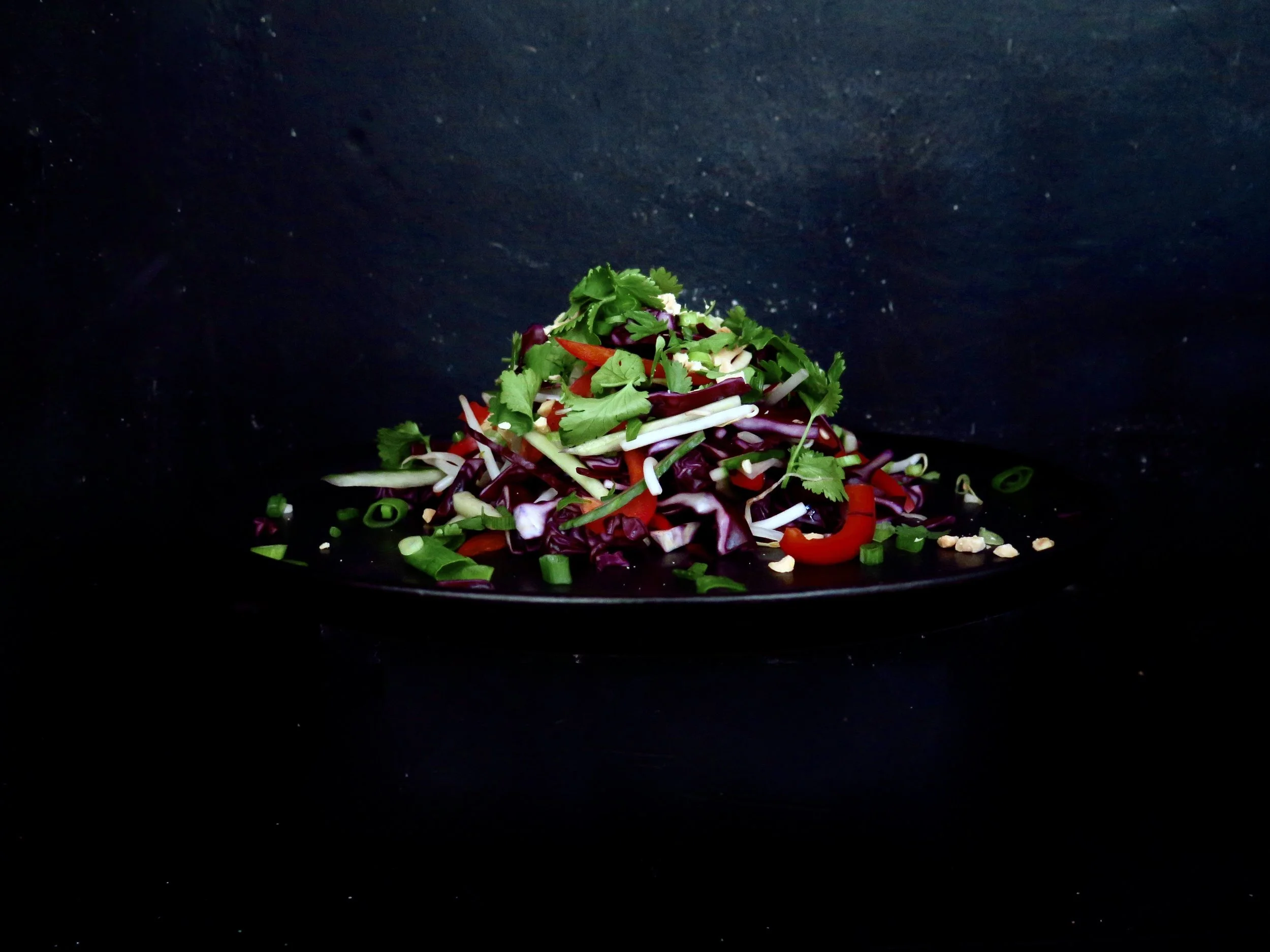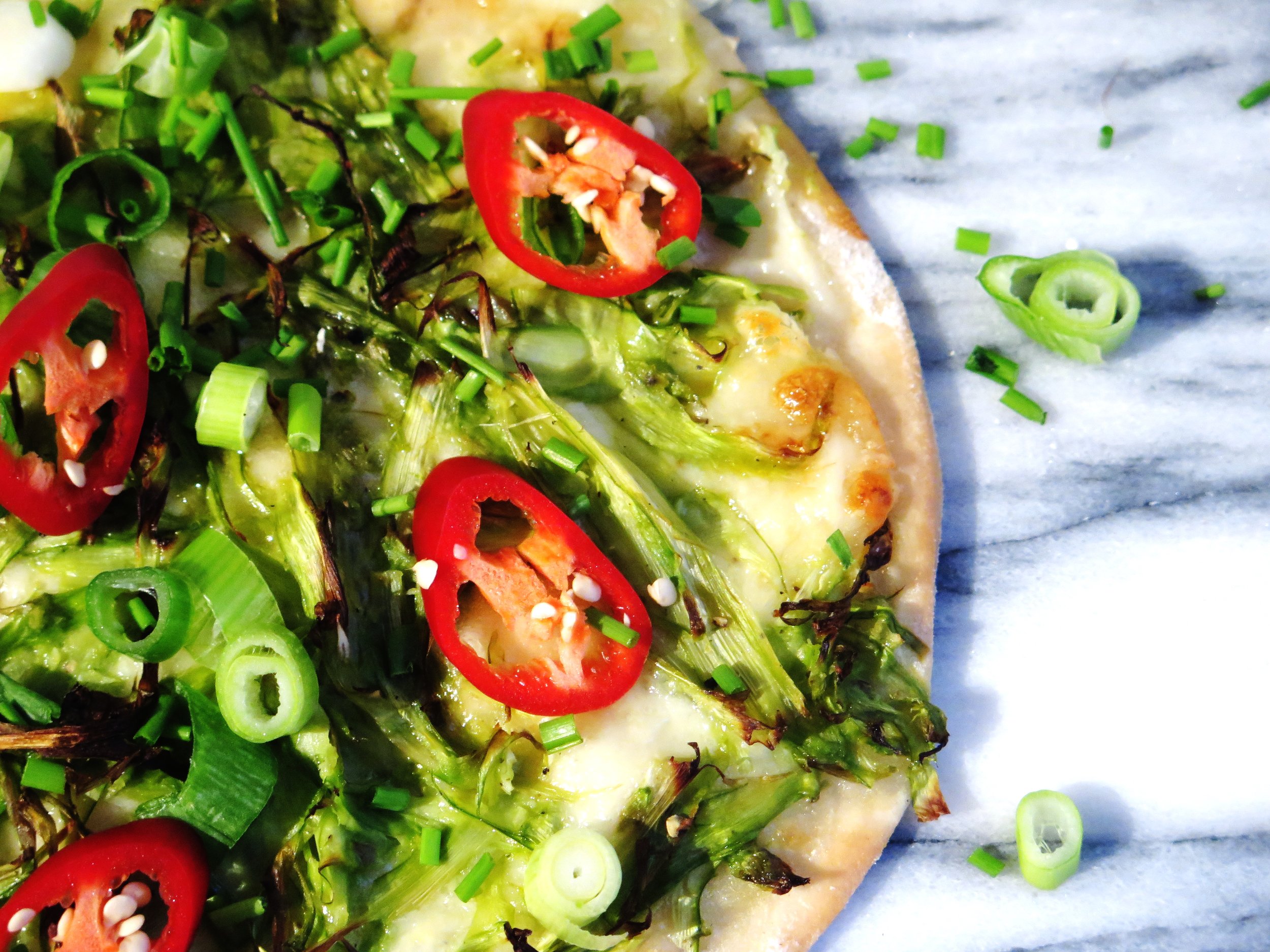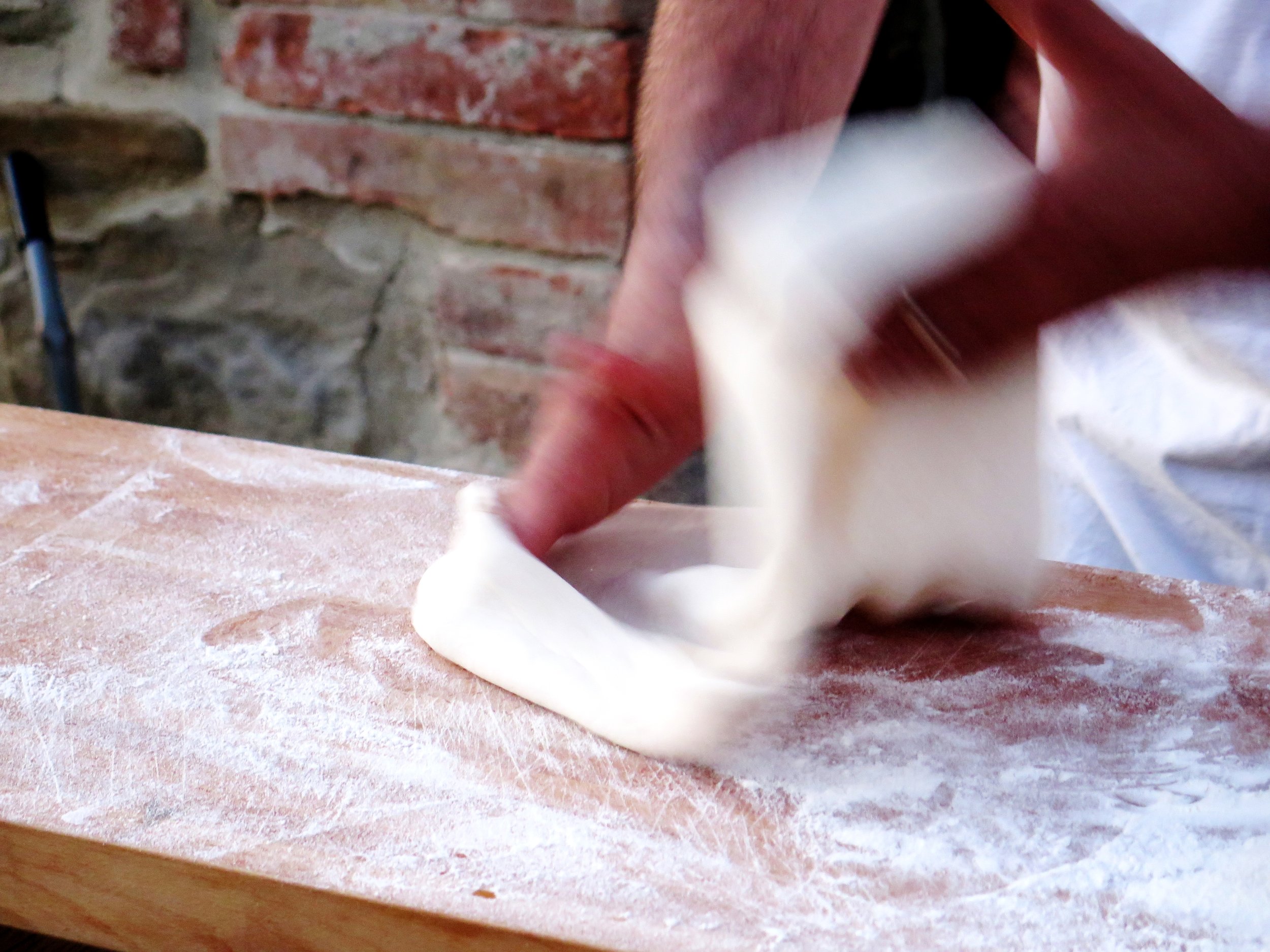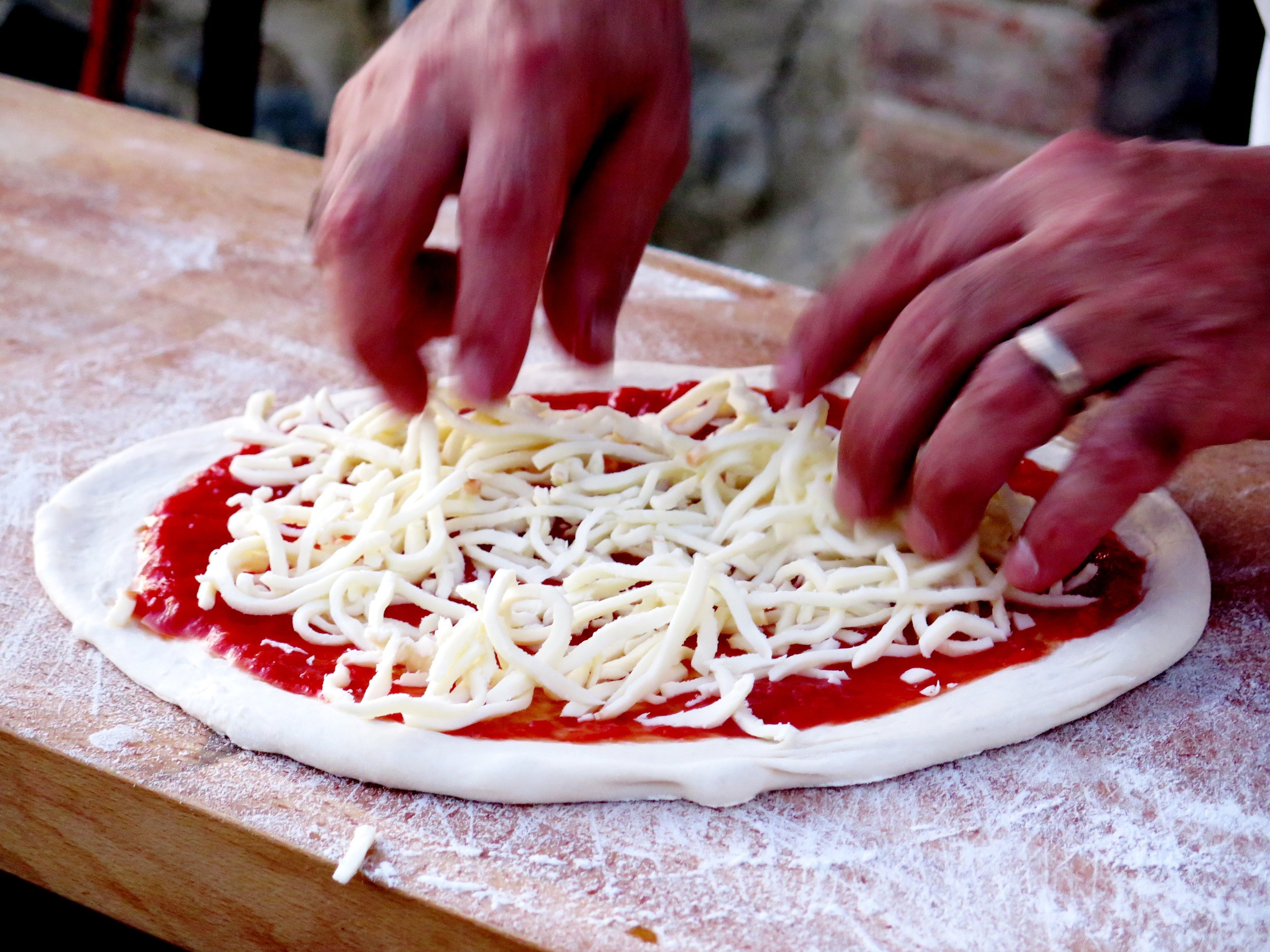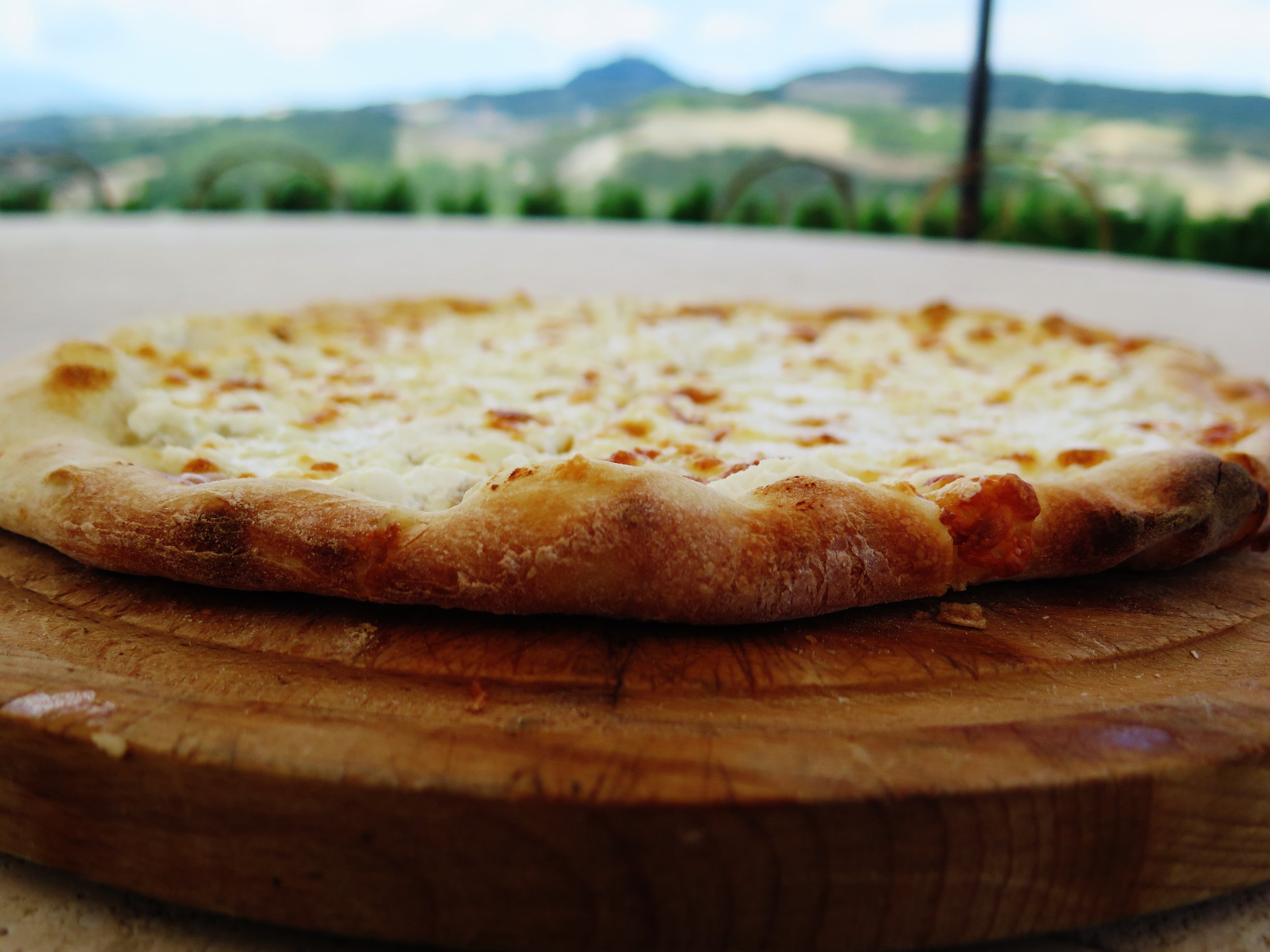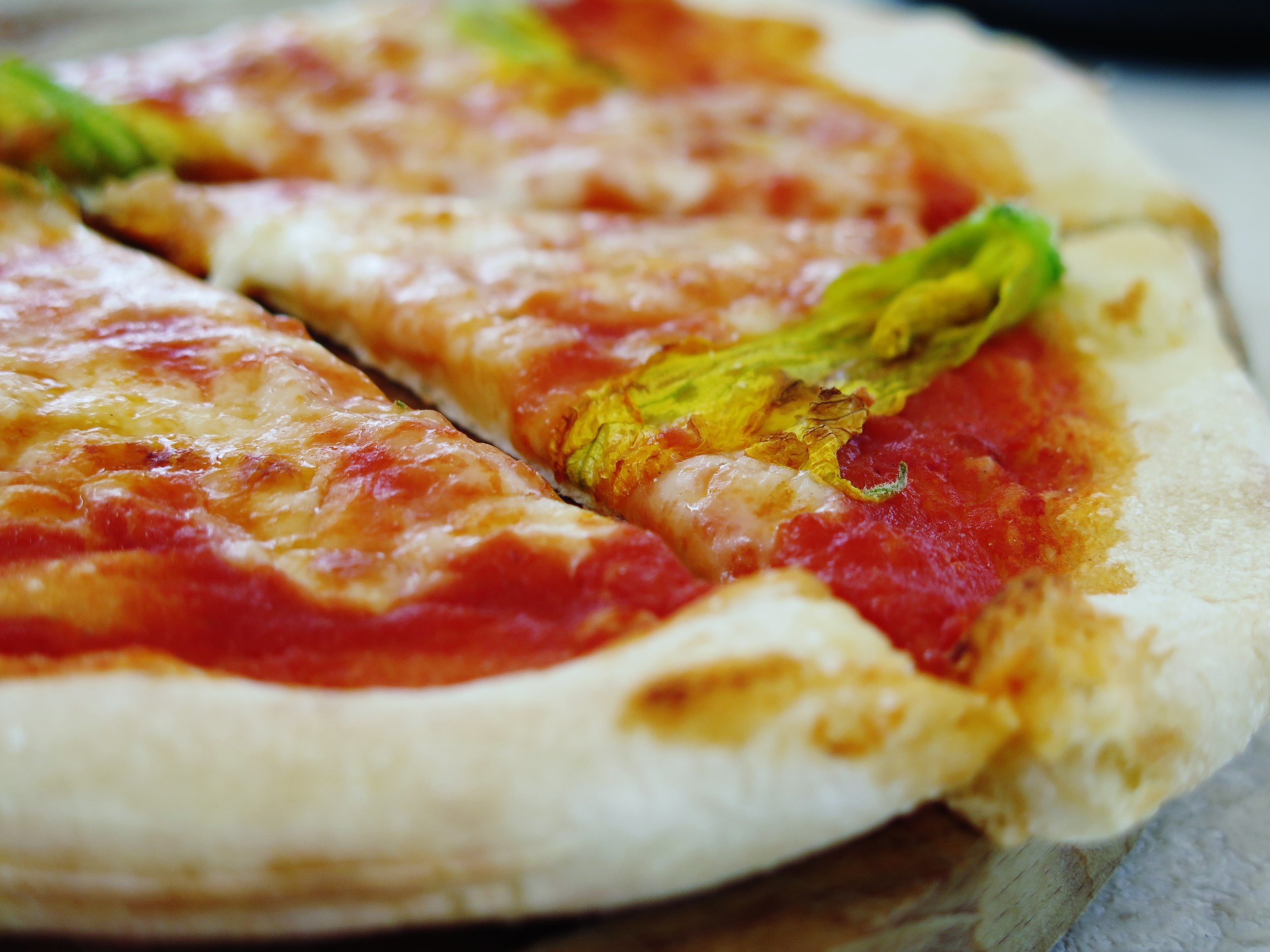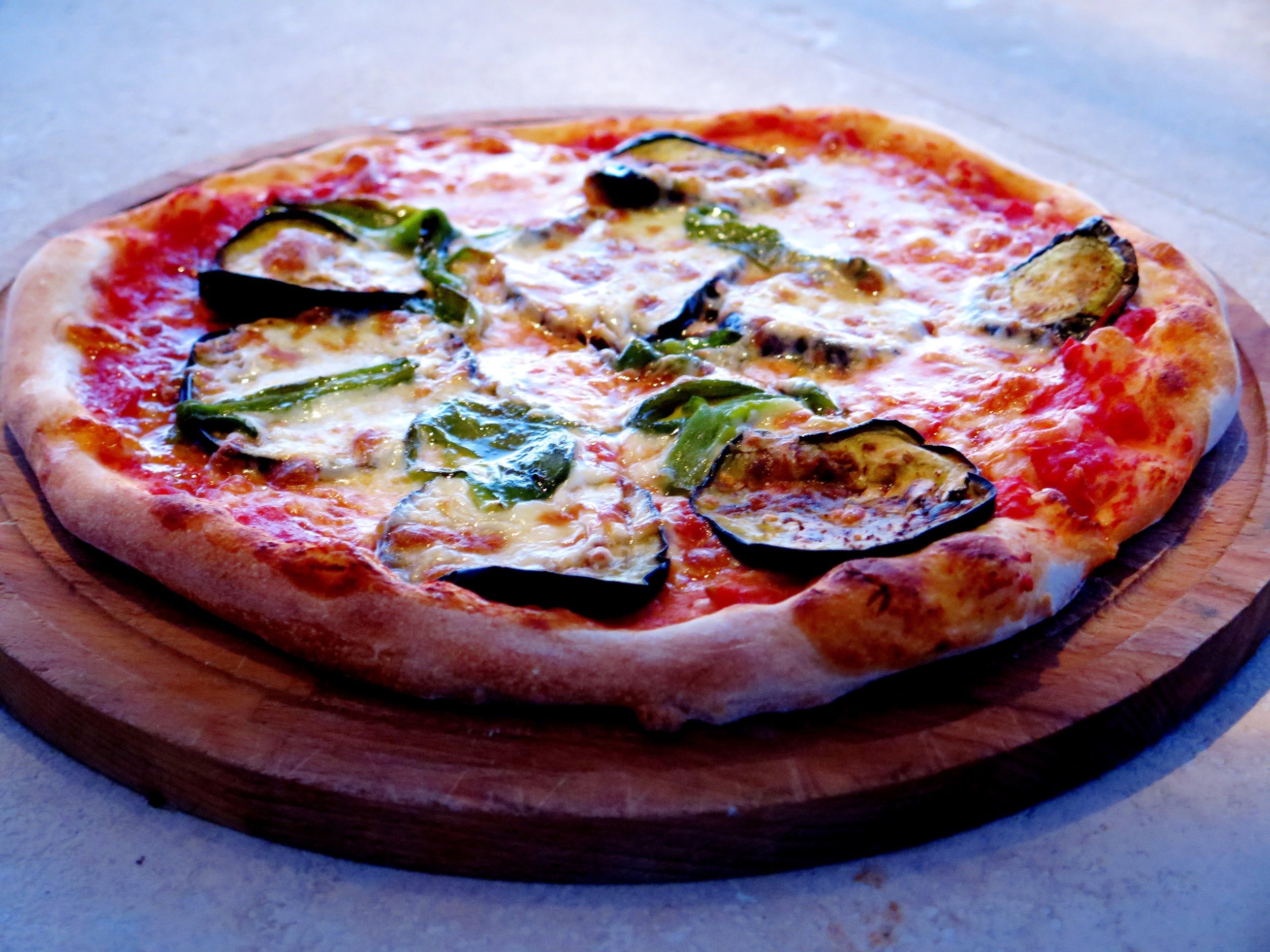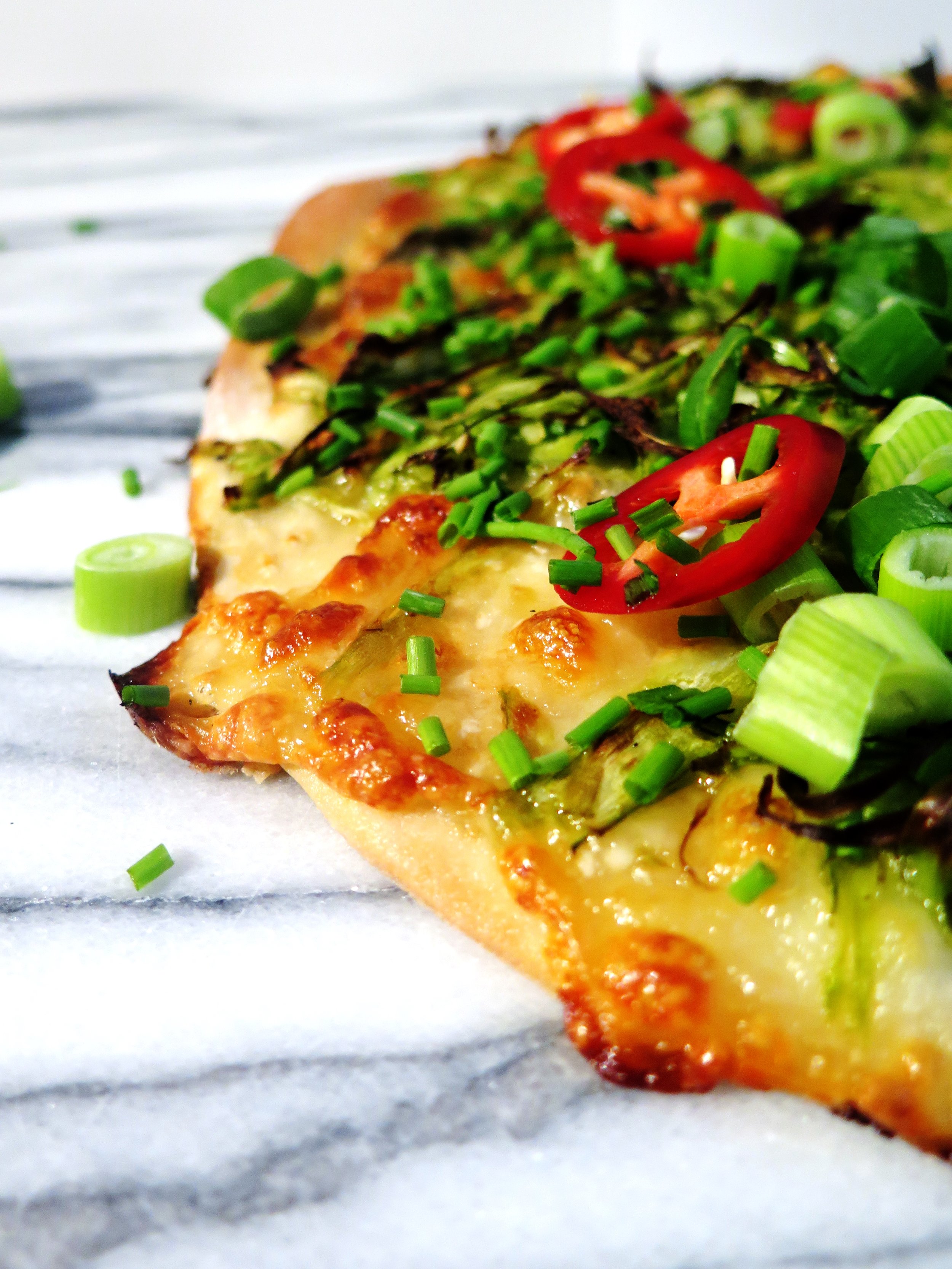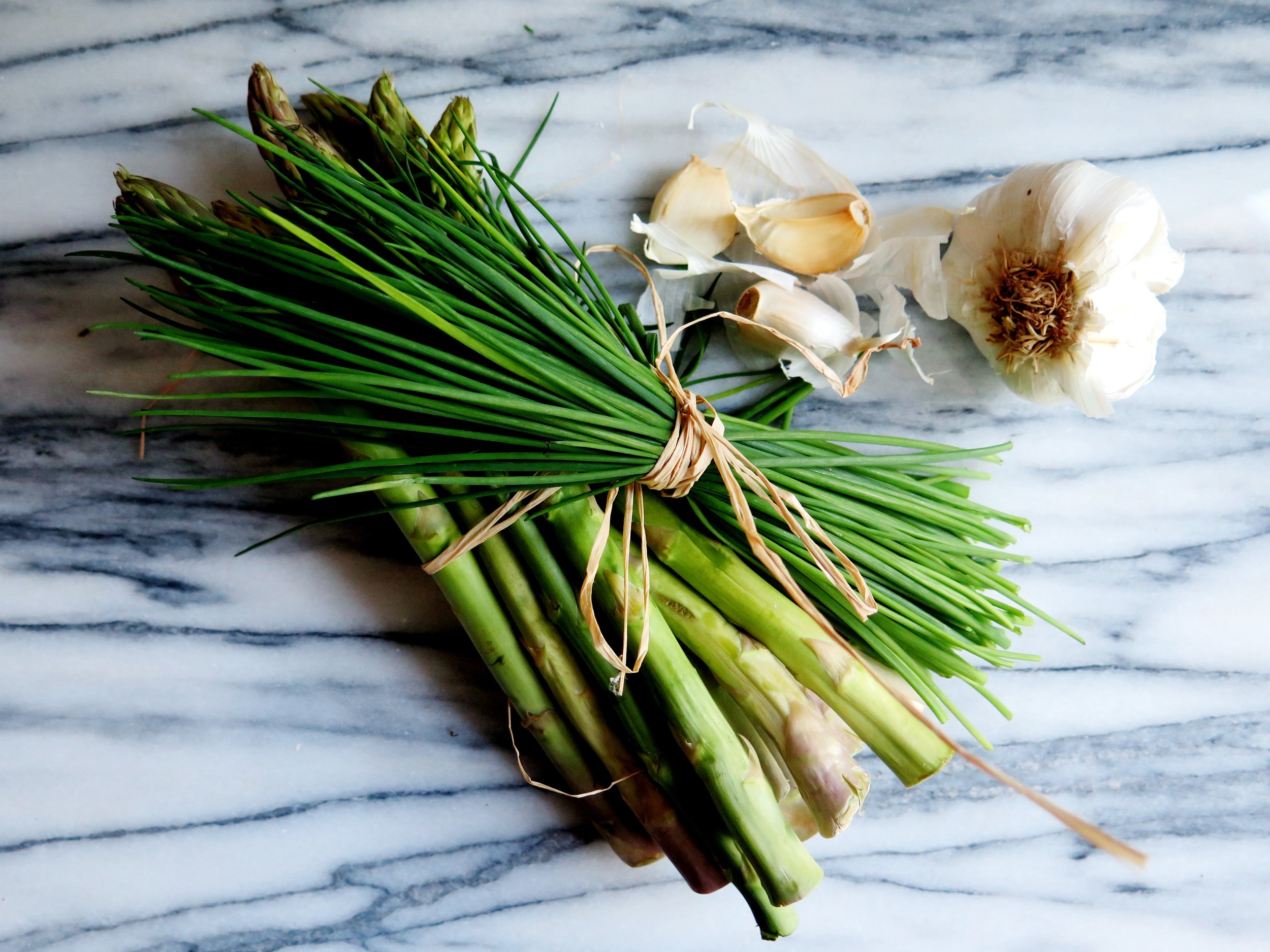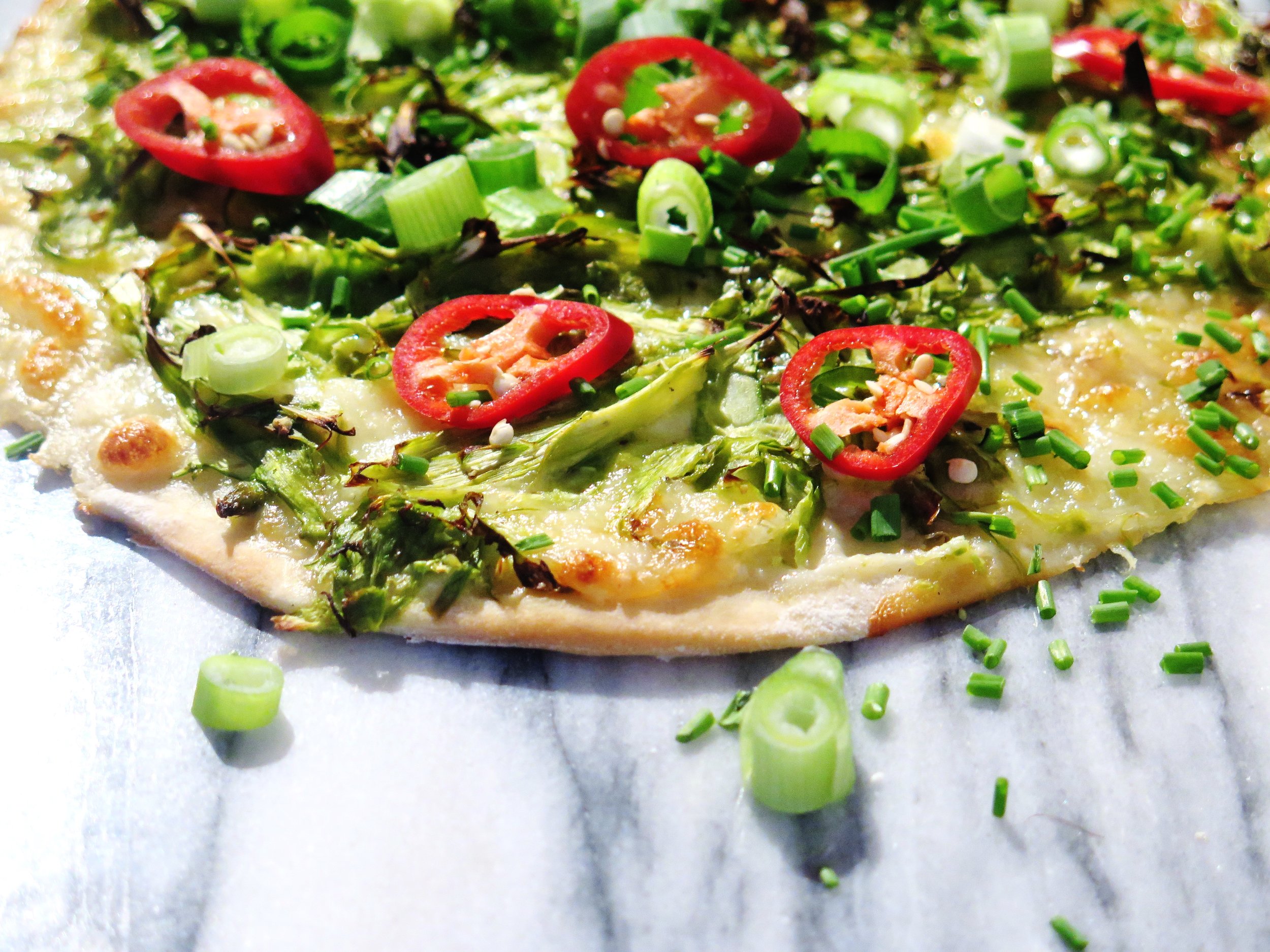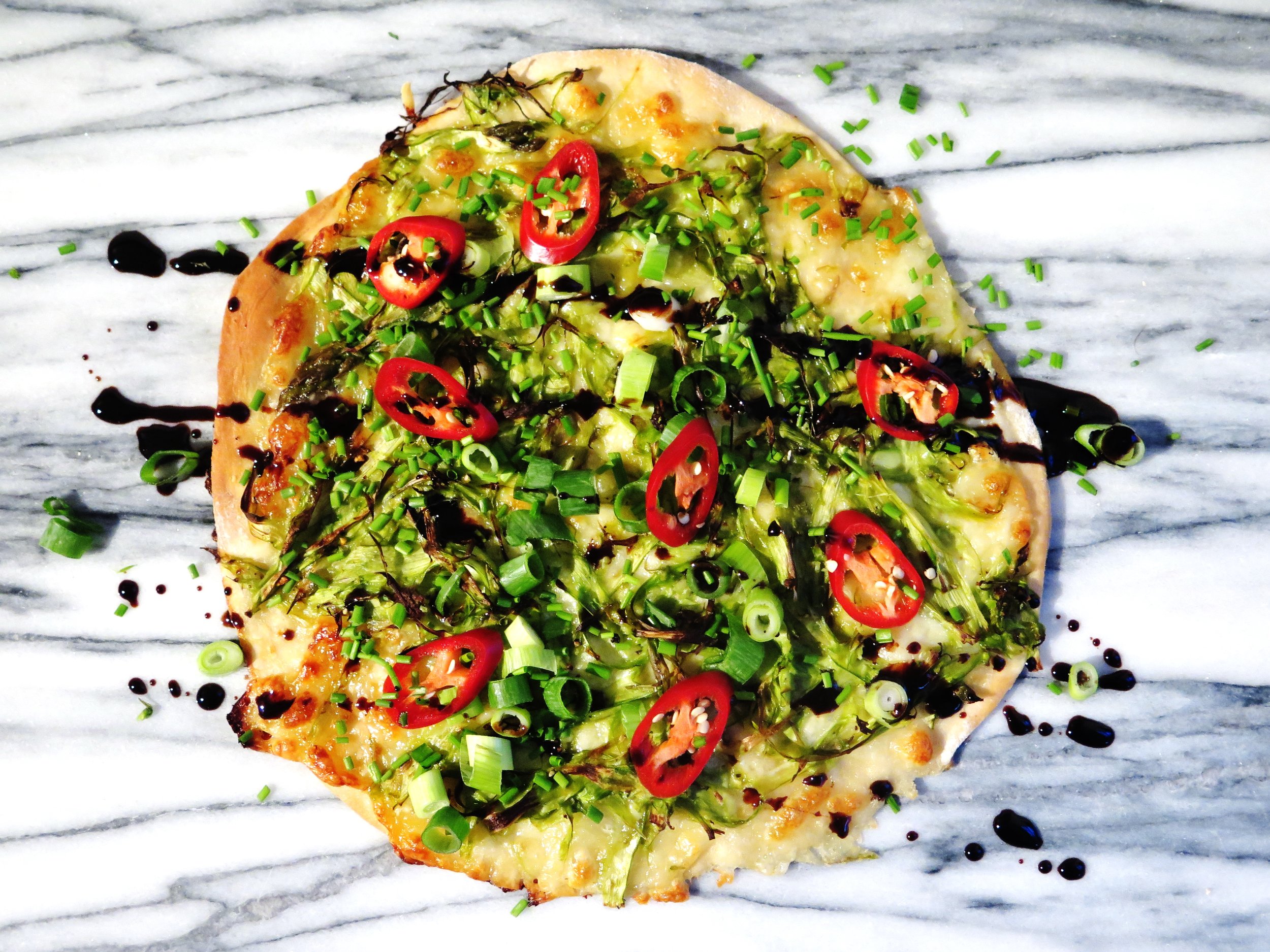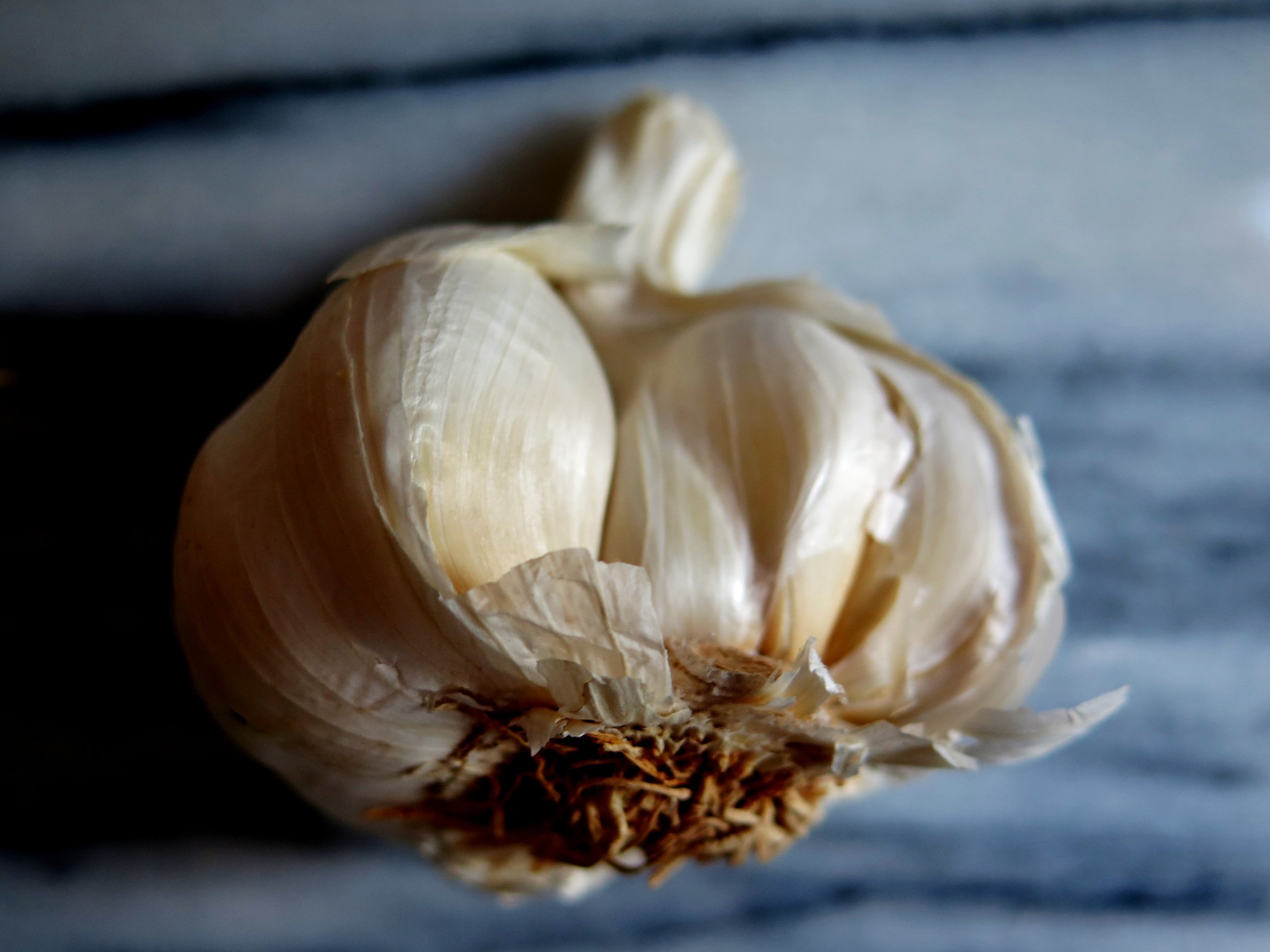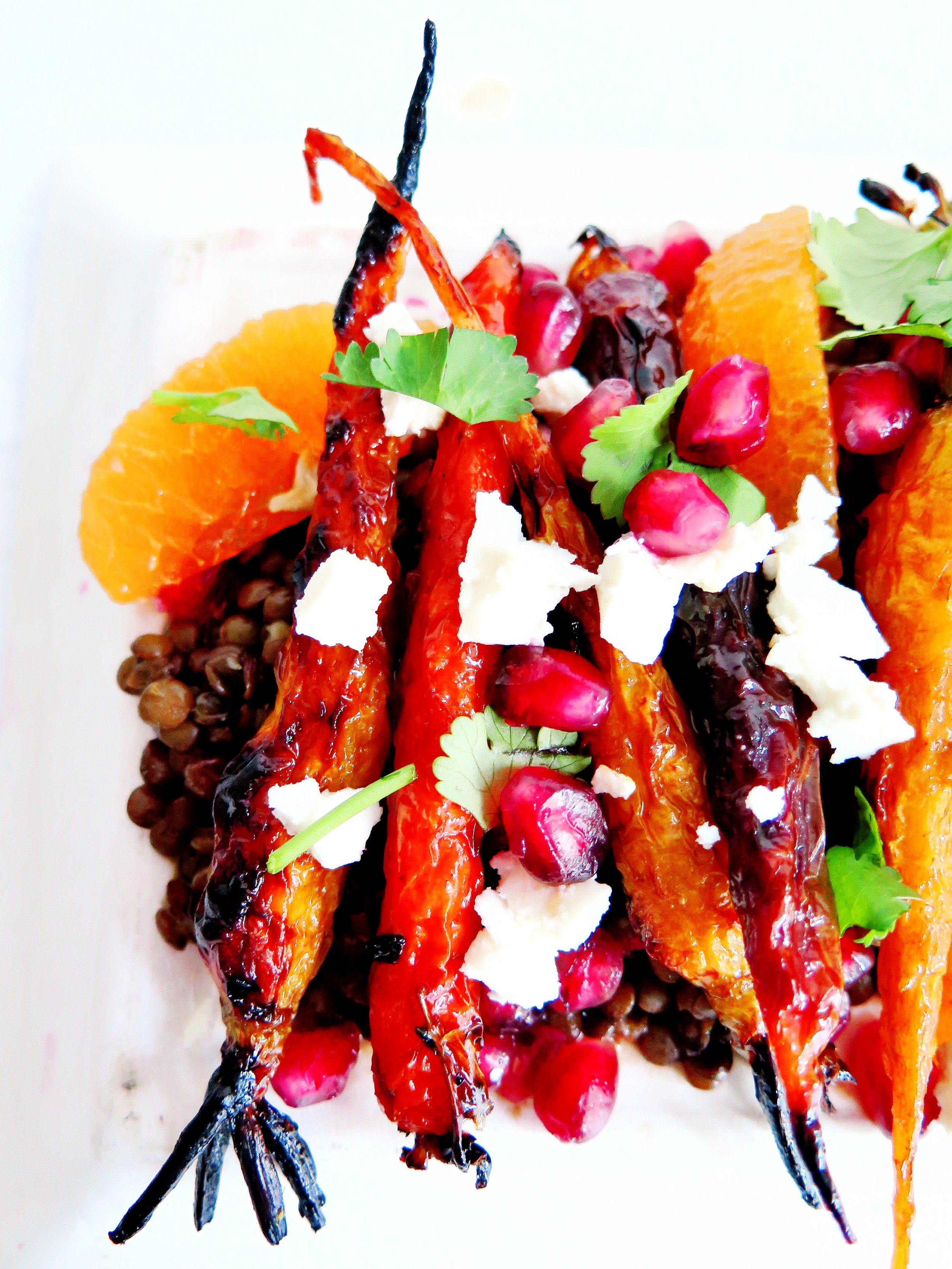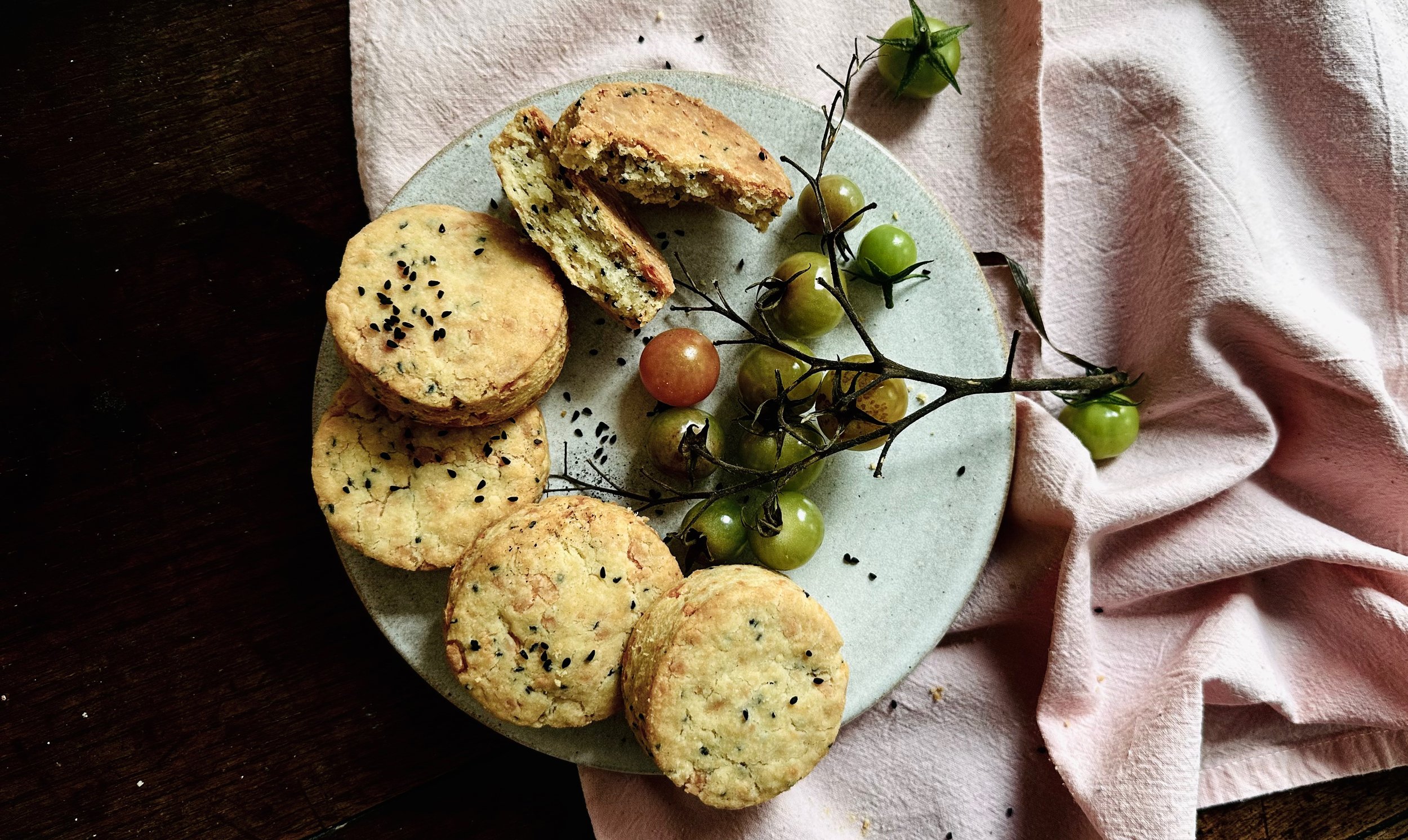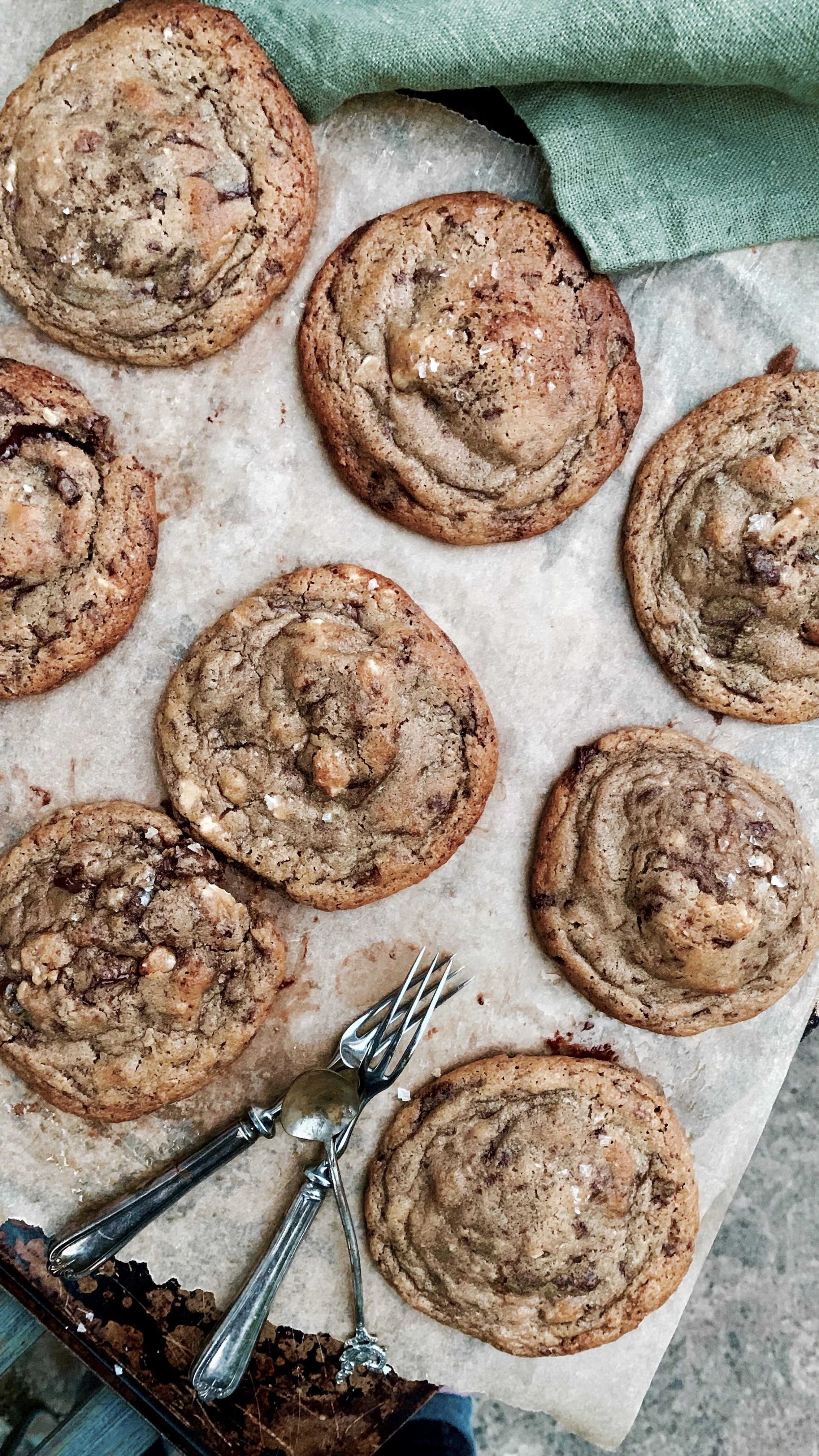This is my favourite meal and has been since I was three – the precocious (and pretentious, no doubt) answer to my friends’ parents’ question as to my favourite food. Apart from the fact that there really isn’t anything fancy about it, it’s crazily simple to make. Despite being pastry-based and with a molten bed of mozzarella, it is very light, and perfect for a gathering.
Viewing entries tagged
vegetables
Rovi is everything Palomar is not.
Palomar is dark and claustrophobia-inducing. You have to squeeze past ten diners’ bums on bar stools to enter the restaurant, itself a tight, gloomy, un-windowed space. Rovi is spacious, vibrant and airy, the tables circling the room with enough space between them to avoid conversation leakage. The waiters are friendly and attentive without being overbearing, and the open kitchen flashes in the background, fulfilling the promise of the restaurant concept of “fire and fermentation”.
I’ve had multiple debates about small plates, my distaste for them reaching fresh heights at Palomar. Done badly (as in the aforementioned restaurant), they are lazy and mean. In the case of Rovi, however, the opposite is true.
The meal started with hot spiced butter beans that melted on the tongue. They were an on- the-house opener, which was a nice touch. These were swiftly followed by the tempura stems with Szechuan, mandarin and kaffir lime vinegar, the batter so light and so crisp that I crunched my way out of previous tempura-ambivalence.
The spaghetti squash followed, its rich, sweet resplendence counterbalanced with the cold zestiness of the ezme and mandarin yoghurt. Next came the hasselback beets - lifted from their unassuming earthy roots, caramelised and roasted without being messed around with unnecessarily.
I hate to bore you with endless eulogizing but I cannot fail to mention how the red cabbage was glorious with little pops of sweetness from the grapes, or how the celeriac shawarma was so cleverly elevated from the oft-scorned and rejected vegetable that often assumes a mouldy jacket in the bottom of my fridge, to a crispy, umami, centre stage.
Dessert came in the form of fig clafoutis, olive oil and lemon ice cream, and plum and juniper doughnuts, bay leaf cream, and almonds. All was delicate and light, sweet, but not teeth –curdlingly so. But the winner was the salted miso caramels, so good that if I concentrate hard enough I can summon up again their umami, caramelized fudgy- sweet/ savouriness.
Unfortunately, I can’t conjure up any negatives to indulge anyone's schadenfreude (if you’re looking for that, click here). I can, however, thoroughly recommend the well-balanced, carefully flavoured food served in Rovi. This is Ottolenghi at his best, contrasting textures, flavours and temperatures, and pushing ingredients to their limits.
Price: ££££
Service: 9/10
Food: 10/10
Ambience: 8/10
Loos:10/10
Good for: brunch, family lunch, vegetarians, vegetable-lovers, Ottolenghi obsessives, healthy eating
HUNGRY FOR MORE?
Nowadays we have the fired-up drama, programmes that are lurid, sweary, and sweaty: Iron Chef, Hell’s Kitchen, the straw-haired, backward-sunglass wearing entity that is Guy Fieri. I still find myself sucked into the carefully contrived vortex of dramatics, where someone burns their hand off or the climax is a grotesquely-sized burger oozing with cellulite-whispering cheese.
But I have an enduring appreciation for the most simple of concepts that were the foundation for many of today’s cooking programmes: green peppers, red tomato; Ainsley Harriet, metre long streams of oil with one arm tucked behind his back; clotted nests of finely spun sugar; dishes named with achingly tenuous puns. Sometimes I long for those days of Ready Steady Cook in its original format. Particularly captivating was the down to earth “quickie bag” challenge: a handful of seasonal ingredients, an on-the-spot declaration of the dish to be conjured up, followed by a frenzied 10 minutes to make good on the promise.
It was raw, unedited, unscripted and exposed – a rare combination these days. And that challenge which has now mutated into the MasterChef mystery box challenge is one that I try to set myself every time the contents of the fridge begin to look pitiful. One man’s debris can be another’s feast. All it requires is a little creativity and imagination (unless your fridge stocks only alcohol, like that of several people I know…).
This soup is so simple that it could almost have been formulated from one of these challenges. The ingredients are few, but their freshness and the way they are only lightly cooked, enhances the flavours. In the UK, we have been starved of spring, but this soup will help compensate in its exuberant and zingy viridity.
Although they are to be enjoyed alongside the soup, the Parmesan spelt crackers featured in the photos are by no means a sideshow, and I shall follow up with the recipe for them. They are frighteningly addictive – I unwittingly crunched through half a batch in one hour.
NB: this can be made vegan by substituting olive oil for butter.
Ingredients (serves 4)
50g butter (substitute with 3 tablespoons olive oil if making vegan)
1 large potato, scrubbed but not peeled, and diced
3 cloves garlic
4 sticks celery, roughly chopped
30g sugar
Large sprig fresh thyme
100ml white wine
1 litre vegetable stock. (I use Marigold, which is also available as vegan recipe)
500g frozen peas
20g fresh mint, leaves stripped from stalks
100g fresh baby spinach leaves, washed
½ tsp salt
¼ tsp ground black pepper
Method
1. Melt butter over medium heat, or gently heat the olive oil
2. Add potato, garlic, celery, sugar, thyme and pinch salt and pepper, and sweat together for about 10 minutes or until the potato is soft, stirring from time to time
3. Add the wine, and cook until the liquid has reduced by roughly one third
4. Add the stock, and bring the mixture to the boil. Keep boiling for 4 minutes
5. Remove the thyme, add the mint leaves, spinach and peas to the boiling mixture, and remove the pot from the heat immediately
6. Blitz in the liquidizer. Adjust the seasoning, and serve warm.
HUNGRY FOR MORE?
At the centre of a party you have the brash, garishly dressed harpy in a spandex and lurex flesh-popping, bum-skirting bodycon dress. She’s swishing her long, over-straightened blonde hair in the hope that people, like magpies, will be drawn in by its glinting sheen. But she’s telling the story you’ve heard a hundred times.
The punchlines are obvious and overdone. It’s an opaque boast to show off her intellect and attractiveness. She’s hyperbolising, and the decibels are mounting, in order to suck more people in.
You draw near, but after a few superficial bites, you hit the bone. What appeared to be a sumptuous, resplendent, sticky chicken wing feast was just a scraggly bit of overhyped flesh, and you’re left with a sickly sweet taste, desperate for something more refreshing and with more interest.
That’s when you leave the centre of the room and go over to the quiet person in the corner: modestly dressed, elegant but not overstated, and initially slightly shy. But once you start talking, there’s no stopping - tantalising wit, layers of texture and depth, sweet enough but with refreshing zestiness that intrigues and keeps you going back for more. Guard this salad closely because when others' attention rapidly wanes they’ll be coming over here too. Food envy is not something to be treated lightly, so here’s the recipe:
Recipe
Ingredients (serves 4)
3 tbsp (60g) smooth peanut butter (unsalted preferably)
4 1/2 tsp (45g) honey
4 1/2 tsp sesame oil
4 1/2 tsp soy sauce
3 tbsp lime juice
15g finely grated fresh ginger
1 medium sized garlic clove, crushed
(optional) 1 small Thai red chilli, very finely chopped
230g red cabbage (approx 1 quarter of a cabbage)
1 red pepper
130g cucumber
3 spring onions
100g beansprouts
60g roasted and salted peanuts, crushed + 10g extra for serving
25g coriander, roughly chopped + 5g extra for serving
Method
- In a medium bowl, whisk together all the dressing ingredients until smooth and emulsified.
- Finely slice the cabbage horizontally (so the average piece is about 4cm long). Remove the stalk and deseed the red pepper, then slice finely horizontally.
- Slice the cucumber in half lengthways and, with a teaspoon, scoop out the seeds. Then slice finely lengthways and then in half horizontally to create matchsticks. Finely chop the spring onions. Then in a large bowl mix together the cabbage, pepper, cucumber, spring onions, crushed peanuts & roughly chopped coriander.
- Pour the dressing over, and mix through. Scatter with extra crushed peanuts and then the chopped coriander, and serve. If you are making in advance, prepare the salad ingredients and dressing separately, and pour the dressing on just before serving.
HUNGRY FOR MORE?
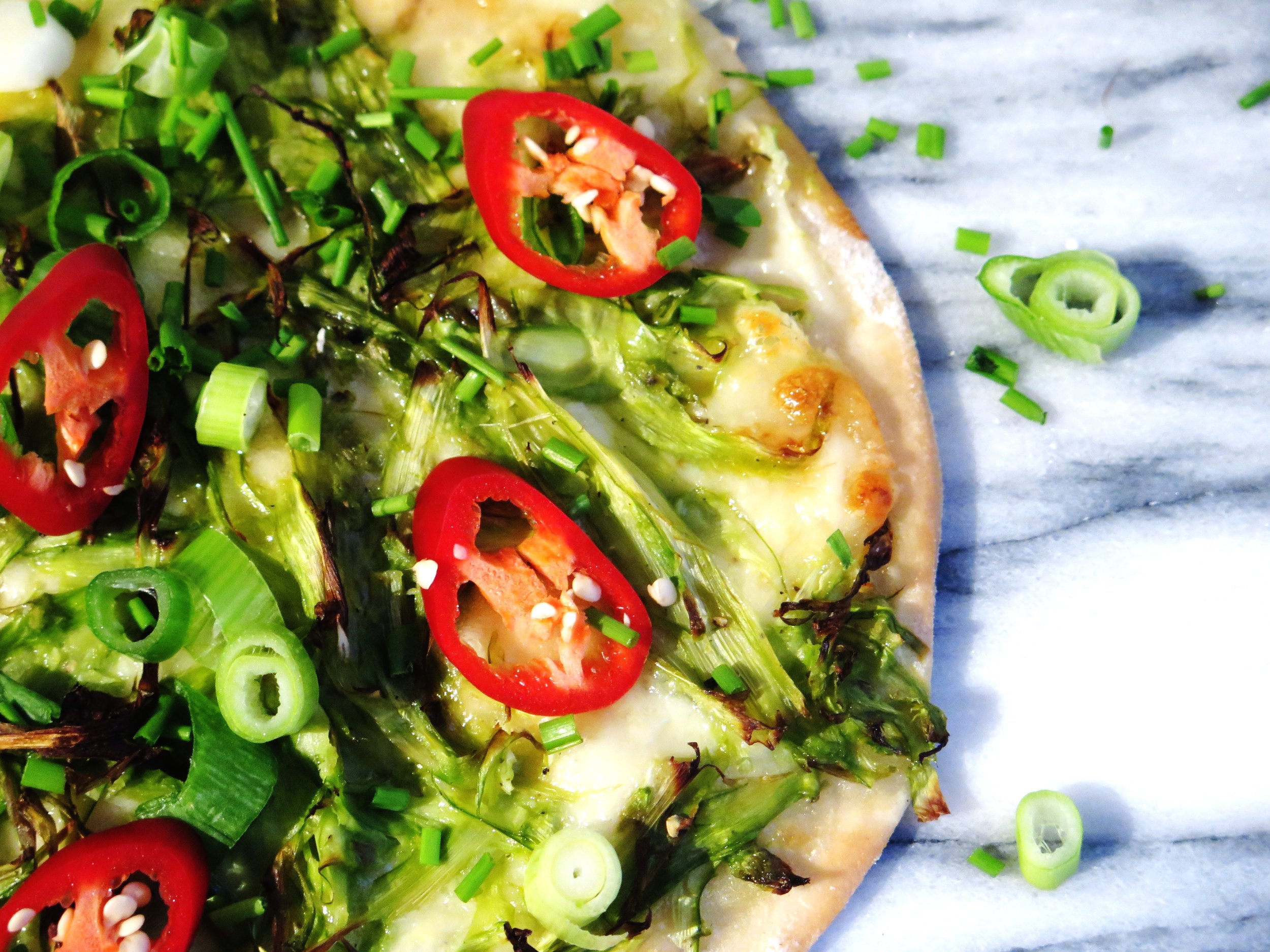 Pizza is in his DNA. Five generations of golden, thin, crispiness. One recipe.
Pizza is in his DNA. Five generations of golden, thin, crispiness. One recipe.
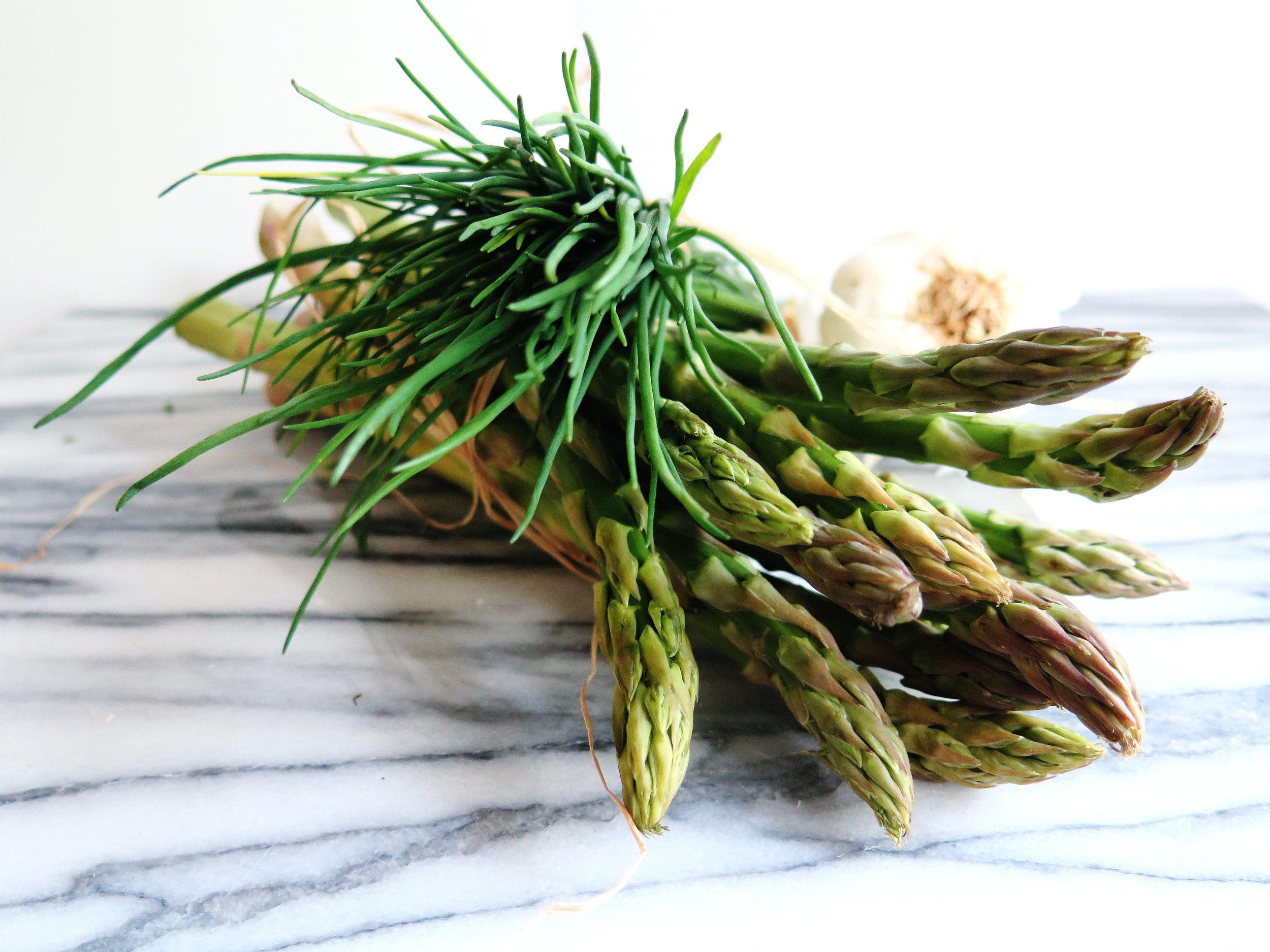
The pizza oven is raging, rapidly devouring its feed of dry wood and spitting out sweet nutty smoke.
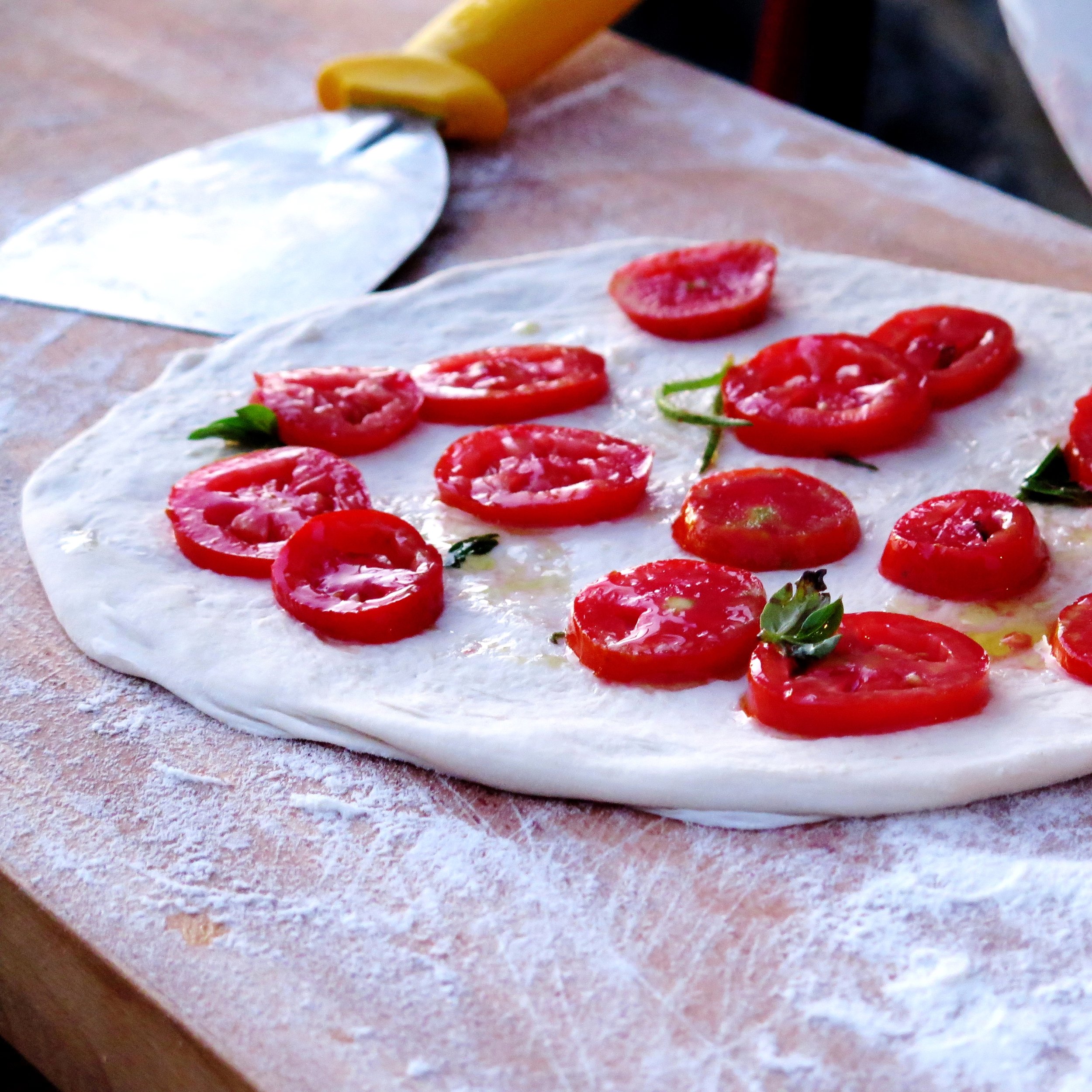
He comes every summer in his Ape brimming with plump mushrooms of dough.

A light sprinkle of flour on a wooden board, and he gets to work.
With wrist flicks and little rotations the round becomes a disc, airborne momentarily to ensure evenness.
A careful spiral of passata with the back of a spoon,
a shower of mozzarella,
and a scattering of whatever’s in the garden: fiori di zucchini, melanzane, pepperoncini…
The flurry of flour continues into the night.
The dinner table is a moderation-free zone.
He only stops when even the strictest of eaters has lost count of the number of pizzas (not slices) he/she has consumed, and physical incapacity is the only limitation.
He doesn’t even really stop there: a couple more are sent to the table per domani.
A pizza “hangover” ensues along with the inevitable promises of “never again” “not for another year”.
But as soon as I hit London soil again I want to relieve that pizza-lover’s fantasy and so I make these.
They’re crisp, thin, verdant, and fresh.
I don’t believe in barren crusts or meanness so the ingredients are abundant and go right up to and beyond the edge of the base.
I use spelt instead of plain flour (as usual) to reduce the GI level and add a nuttier more complex flavour to the dough.
The added bonus of this recipe is that it is ridiculously quick. Kneading is kept to a minimum (5 minutes) and the rising time is the shortest you’ll ever find for pizza dough – ½ hour.
The balsamic-maple reduction is optional but I include it to add extra caramelised sweetness, extra tang and a touch of drama.
Ingredients – makes 4 pizzas
Base
250ml warm water
3 tsp dried yeast (fast active yeast)
500g white spelt flour
1 ½ tsp salt
1 tbsp olive oil
Topping
750g asparagus
30g garlic cloves, peeled and crushed
1 tbsp olive oil
1 1/4 tsp salt
Grated zest of ½ lemon
A few grinds of Pepper
400g mozzarella (4 balls), chopped finely into cubes
100g parmesan, grated
3 spring onions, thinly sliced
Small bunch of chives, finely chopped
2 red chillies (optional), finely sliced
2 large baking trays or 4 medium baking trays, greased and dusted with flour
Maple Balsamic Reduction (optional)
120ml balsamic vinegar
2 tsp maple syrup
Method
- Heat oven to 120˚C for 5 minutes then switch it off.
- In the bowl of a mixer (or large bowl if making by hand) pour in warm water and sprinkle yeast over it. Allow to stand for 5 minutes for the yeast to activate.
- Stir in flour, salt and oil. Knead by hand for 5 minutes on a lightly floured surface, or in a machine fitted with a dough hook for 5 minutes until the dough is smooth and when you press your thumb into it, it bounces back up.
- Divide dough into two and place each half in a lightly oiled bowl. Cover with cling film and place in warmed oven. Allow to rise for 30 minutes or until doubled, then remove from oven and preheat it to its highest temperature, usually 250˚C.
- While the dough is rising, use a vegetable peeler to shave the asparagus: place the asparagus flat on a surface, and holding it at the woody end, shave it from above the woody end to the top of the spear. I sometimes use the ends to make a stock for asparagus risotto.
- Place the ribbons in a bowl and mix with garlic, oil, salt, lemon zest and pepper.
- Once risen, divide each half into two and roll out each quarter into a 0.5cm thick disc. Place on tray and scatter each disc with mozzarella, parmesan, and shaved asparagus. Bake in oven for 15-20 minutes until golden and bubbling.
- Once baked, scatter with spring onions, chives, and chillies, if using. Drizzle with balsamic reduction, if desired, and serve immediately.
Maple Balsamic reduction
- Boil balsamic and maple syrup together over a high heat for about 5 minutes until it thickens slightly to consistency more like that of pure maple syrup. Allow to cool for 1 minute, and drizzle over pizzas.
Adapted from The Smitten Kitchen Cookbook
I wandered into my favourite greengrocer yesterday in search of inspiration, and came out laden with half the store. Amongst the wooden crates I found the most beautifully vibrant baby carrots and blushing, freckled pomegranate orb.
Although lentils and carrots are usually associated with comfort and winter, I used fresh orange and pomegranate jewels to lift them to a lighter, more summery dish.
The carrots are poached in orange juice and maple syrup until juicy and softened and the liquid has reduced to a golden caramel. They are then roasted until sticky, slightly charred and a little withered, but dense with succulence and depth of flavour. The caramel is turned into a citrusy dressing to drench the lentils, with the sweetness balanced with the salty kick of feta.
Ingredients
200g puy lentils
2 tsp vegetable bouillon stock
1 litre boiling water
400g baby carrots
Juice of 3 oranges (15 tbsp)
5 tbsp maple syrup
¼ tsp salt
2 tbsp olive oil
1 ½ tsp lemon juice
1 tbsp pomegranate molasses
¼ tsp salt
2 large garlic cloves, crushed
2 oranges supremed (i.e. segmented with skin and membrane removed)
100g feta
140g pomegranate seeds (half a pomegranate)
20g fresh coriander, roughly chopped
Method
- Place lentils, stock and boiling water in a pan over a high heat and allow to simmer with a lid on for 30-35 minutes until fully cooked. They should be soft and no longer chalky, but definitely not mushy. Drain them, and set aside in a bowl to cool.
- While the lentils are cooking, prepare the carrots: pour the orange juice into a large frying pan over a medium high heat, add the maple syrup and salt, and stir to combine. Carefully arrange the carrots in the pan and allow to simmer for about 30 minutes or until the carrots have softened and the liquid has reduced by about two thirds and become viscous and syrupy. Remove from the heat.
- Preheat the grill to 230˚C. Remove the carrots from the frying pan (while preserving the syrup), arrange them on a baking tray and grill for 5 minutes (checking after 3 minutes) or until they are slightly charred.
- Into the pan with the remaining syrup, pour in the olive oil, pomegranate molasses, lemon juice, crushed garlic cloves and salt to make the dressing. Stir the mixture over a low heat until fully combined. Pour the warmed dressing over the bowl of lentils.
- To serve, carefully spoon the lentils and any non-absorbed dressing on to a platter, and scatter with pomegranate seeds and crumbled feta. Arrange the orange segments and roasted carrots over the top, and sprinkle with the chopped coriander.

